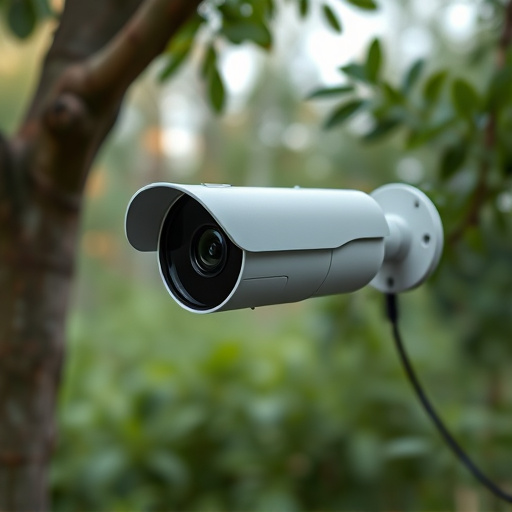When choosing a hidden camera with built-in DVR, resolution is key for clear footage; opt for 1080p or 4K. Factors like low-light performance, framing, motion detection, and stabilization enhance video quality. These cameras offer discretion and high-definition recording, ideal for security and monitoring. Prioritize FOV, night vision, motion detection, and remote access. Legally and ethically, understand privacy laws regarding hidden surveillance to avoid legal issues.
Hidden cameras with integrated Digital Video Recorders (DVRs) offer discreet surveillance solutions. This comprehensive guide delves into the intricate world of hidden camera DVR resolution, exploring factors influencing image quality, diverse camera types, and video evaluation techniques. We’ll also dissect legal and ethical considerations surrounding their use. Whether enhancing home security or conducting investigations, understanding these elements ensures you choose the optimal hidden camera with built-in DVR for your needs.
Understanding Hidden Camera DVR Resolution: A Comprehensive Overview
When considering a hidden camera with built-in DVR, understanding the resolution is paramount to ensuring you capture clear and detailed footage. Resolution refers to the amount of detail that can be captured by the camera’s sensor, measured in pixels. Higher resolutions like 1080p (Full HD) or even 4K provide sharper images and more granular details, ideal for identifying subjects clearly. Lower resolutions may suffice for general surveillance but could result in grainy footage, making it harder to discern features.
The DVR component allows you to record and store this footage securely. It’s crucial to match the camera’s resolution with the DVR’s recording capabilities to guarantee optimal quality. Many modern hidden cameras offer adaptable settings, allowing you to choose between different resolutions based on your surveillance needs. Whether for home security, business monitoring, or covert operations, selecting the right combination of camera resolution and DVR functionality is key to achieving effective and reliable surveillance.
Factors Affecting Image Quality in Built-in DVR Cameras
The image quality of a hidden camera with built-in DVR is influenced by several key factors. One of the primary considerations is resolution, which dictates the sharpness and detail captured by the camera. Higher resolutions, such as 1080p or even 4K, offer more detailed footage but require more storage space and processing power. Sensitivity to light, or low-light performance, is another crucial aspect; cameras with advanced sensors can produce clearer images in dimly lit environments.
Framing and field of view also play a significant role. Wider angle lenses capture more of the scene but may distort it at the edges, while narrower fields of view offer greater detail within a specific area. Additionally, motion detection capabilities, which activate recording only when movement is detected, can conserve storage space by reducing unnecessary footage. Other factors like image stabilization and noise reduction contribute to maintaining clear, steady images, enhancing overall video quality.
Types of Hidden Cameras and Their Recording Capacities
Hidden cameras, also known as surveillance cameras, come in various types, each with unique features and recording capacities. One popular variety is the hidden camera with built-in DVR (Digital Video Recorder). These devices are designed to blend seamlessly into their surroundings, whether it’s a miniature camera disguised as a pen or a sophisticated indoor camera that looks like a common decorative item.
The primary advantage of these hidden cameras is their ability to record high-definition video and store vast amounts of data internally or on an external memory card. The DVR functionality allows for easy playback and management of recorded footage, making it convenient for monitoring purposes. With resolutions ranging from 720p to 4K, users can capture crystal-clear images and videos, ensuring detailed evidence for various applications, such as home security, business surveillance, or even personal use.
Evaluating Video Footage Clarity and Detail
When evaluating video footage from a hidden camera with built-in DVR, clarity and detail are paramount. High-resolution settings ensure that each frame captures intricate details, making it easier to identify individuals or objects of interest. Look for cameras offering Full HD (1080p) or even higher resolutions, as these deliver sharper images and more distinct visuals.
Pay close attention to the camera’s field of view (FOV) and night vision capabilities too. A wider FOV provides a broader perspective, while adequate night vision ensures clear footage in low-light conditions. Features like motion detection and remote access further enhance usability, allowing you to review footage remotely and receive alerts when activity is detected.
Legal and Ethical Considerations for Using Hidden Camera DVRs
The use of a hidden camera with built-in DVR (digital video recorder) raises several legal and ethical concerns, especially when it comes to privacy rights. In many jurisdictions, capturing and recording videos or audio of individuals without their knowledge is prohibited, except in specific circumstances such as law enforcement investigations, where proper authorization and guidelines are followed. Using a hidden camera DVR for personal surveillance or security purposes might be considered an invasion of privacy, leading to potential legal repercussions.
Ethically, it’s essential to consider the impact on individuals whose activities are being secretly recorded. The use of these devices should respect people’s right to privacy and consent, ensuring that their actions are not captured without their knowledge for non-consensual or malicious purposes. It’s crucial to understand local laws regarding hidden surveillance equipment to avoid legal issues and maintain ethical standards in using technology like a hidden camera DVR.
